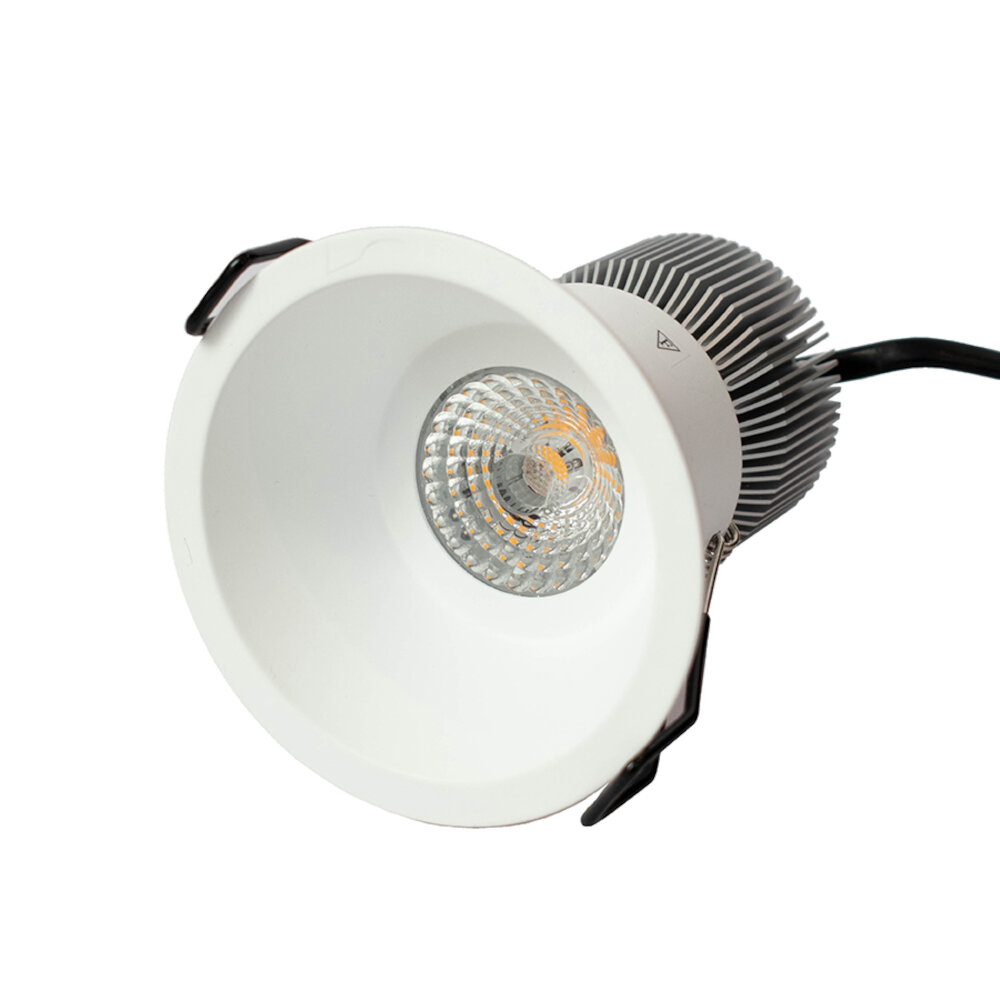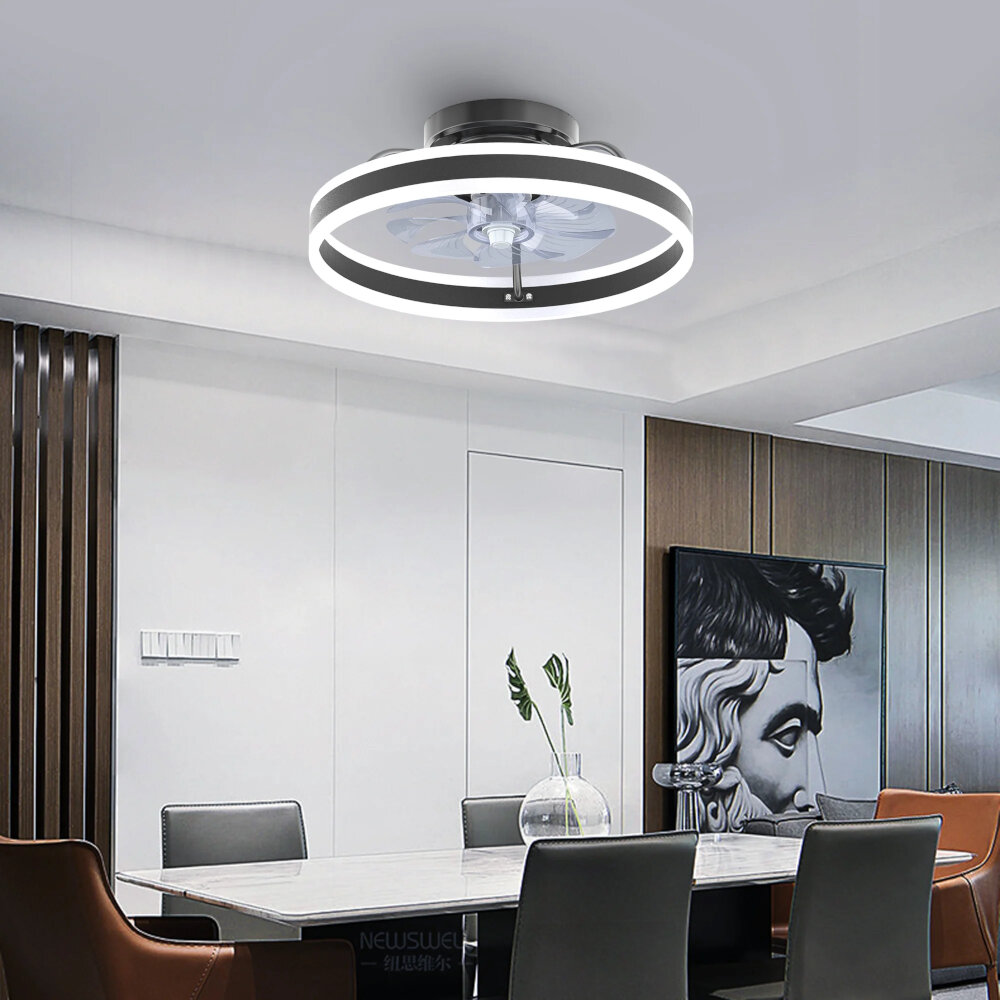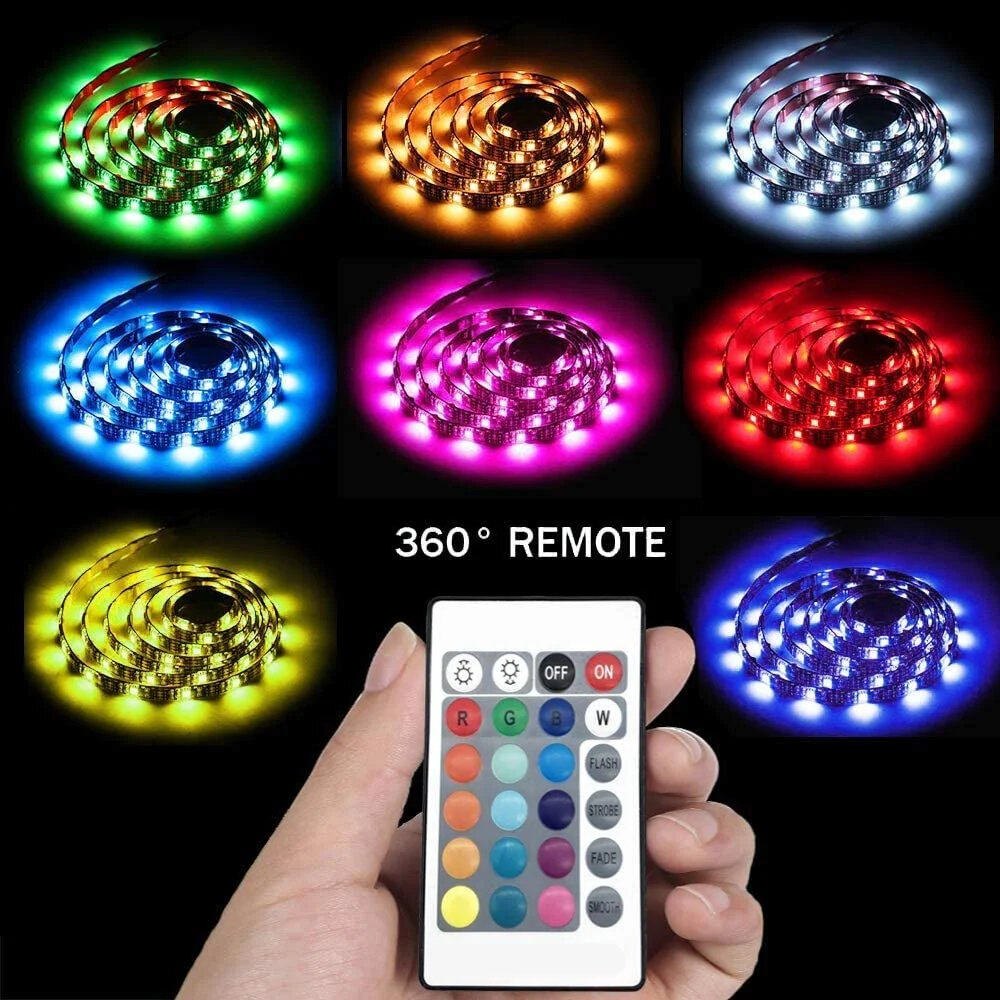Why Your LED Light Bulb is Flickering When Off: Causes and Solutions

LED light bulbs are the go-to option for most people nowadays due to their energy efficiency and long lifespan. They are a popular choice for both residential and commercial use. However, many people may notice that their LED light bulbs flicker even when they are turned off. This can be a confusing and frustrating problem, especially if the flickering is noticeable during the night. In this article, we will explore the possible causes of why LED light bulbs may flicker when off and provide solutions to prevent it from happening. Flickering LED light bulbs can be caused by a variety of factors, including electrical wiring issues, voltage fluctuations, and electromagnetic interference. Some people may also experience flickering when they use dimmer switches, which can be a common problem with LED bulbs. Understanding the reasons behind the flickering can help you find the right solutions to prevent it from happening. In the following paragraphs, we will discuss each cause in detail and provide practical solutions to help you resolve the issue of flickering LED light bulbs when off.
LED light bulbs are gaining popularity due to their energy efficiency and longevity, however, some users may experience a common issue of flickering when the light switch is turned off. This issue can be caused by a variety of factors such as electrical current leakage, electromagnetic interference, faulty wiring, or incompatible dimmer switches. The flickering can be a nuisance, especially at night when trying to sleep, and it can also indicate potential electrical hazards. Fortunately, solutions to this problem include using a different dimmer switch, replacing faulty wiring, or installing an isolation transformer to reduce electromagnetic interference.
It is crucial to address the issue of LED light bulbs flickering when off as it can lead to various problems. Firstly, it can cause discomfort and annoyance to those who are sensitive to flickering lights, leading to headaches and eye strain. Additionally, it can be a sign of a more significant electrical issue, such as a wiring fault, which could potentially lead to a dangerous situation if left unaddressed. Furthermore, flickering LED light bulbs can result in reduced lifespan and performance of the bulb, leading to increased costs in replacement and energy bills. Therefore, addressing the issue promptly can not only improve the comfort and safety of individuals but also save money in the long run.
LED light bulbs are a popular and energy-efficient lighting solution for homes and businesses. However, many people have experienced the frustrating phenomenon of flickering LED light bulbs when they are turned off. There are several possible causes for this issue, including electrical interference, faulty wiring, incompatible dimmer switches, and residual current in the circuit. Fortunately, there are also several solutions to this problem, such as replacing the dimmer switch, installing a suppressor or filter, or simply choosing a different brand of LED bulb. It is important to address this issue promptly, as flickering LED bulbs can be a sign of a larger electrical problem that could potentially pose a safety hazard.
Voltage Fluctuations

Voltage fluctuations are one of the most common causes of flickering LED light bulbs. This is because LED bulbs are highly sensitive to changes in voltage, and even tiny fluctuations can cause them to flicker or dim. Voltage fluctuations can be caused by a variety of factors, including electrical interference, power surges, and faulty wiring. Electrical interference can occur when other appliances or electronic devices are plugged into the same circuit as the LED bulb, which can cause the voltage to fluctuate. Power surges can also cause voltage fluctuations, and these can be caused by lightning strikes, power outages, or faulty electrical equipment. Faulty wiring is another common cause of voltage fluctuations, and this can be caused by poor installation, damaged wiring, or old wiring that needs to be replaced. To address voltage fluctuations, it is important to identify the root cause of the problem. If the problem is caused by electrical interference, it may be necessary to move the LED bulb to a different circuit or disconnect other appliances or electronic devices from the circuit. If the problem is caused by power surges, it may be necessary to install a surge protector or voltage stabilizer to protect the bulb from sudden increases in voltage. If the problem is caused by faulty wiring, it may be necessary to have an electrician inspect the wiring and make any necessary repairs or replacements. By addressing the underlying cause of voltage fluctuations, it is possible to prevent LED bulbs from flickering and ensure that they operate smoothly and reliably.
Voltage fluctuations refer to the changes in the voltage level supplied to an electrical device. These fluctuations can occur due to various reasons, such as voltage surges, power outages, or wiring issues. LED bulbs are sensitive to voltage fluctuations since they require a constant voltage level to operate efficiently. When voltage fluctuations occur, the LED bulb’s performance can be affected, causing flickering, dimming, or even total failure. In some cases, voltage fluctuations can also cause damage to the LED bulb’s internal components, shortening its lifespan. Therefore, it is essential to ensure that the electrical system supplying power to LED bulbs is stable and free from any voltage fluctuations.
Voltage fluctuations are a common problem that affects the performance of electrical devices, including LED light bulbs. The primary causes of these fluctuations can be attributed to various factors, such as power grid issues, unstable power supply, and faulty wiring. Power grid issues can occur due to overloading, high demand, or inadequate maintenance, leading to voltage spikes and dips. Unstable power supply, on the other hand, can be caused by power surges, brownouts, or blackouts, which can cause the voltage to fluctuate erratically. Lastly, faulty wiring can also be a factor, as it can cause resistance and impedance, leading to voltage drops and fluctuations. Identifying and addressing these causes of voltage fluctuations is crucial in ensuring the proper functioning of electrical devices, including LED light bulbs.
Voltage fluctuations are a common problem that can cause flickering in LED light bulbs. There are several solutions available to address this issue. One solution is to install a voltage stabilizer, which regulates the voltage and prevents fluctuations. Another option is to replace the existing wiring with a thicker gauge wire, which can handle higher voltage levels and reduce fluctuations. It is also important to ensure that the light bulb is compatible with the voltage in the system. Additionally, addressing any issues with the electrical panel or circuit breakers can help prevent voltage fluctuations. By taking these steps, it is possible to eliminate flickering in LED light bulbs and ensure a steady and reliable source of light.
Incompatible Dimmer Switches

If you are struggling with flickering LED lights even when they are turned off, the culprit may be incompatible dimmer switches. Not all dimmer switches are created equal, and some are simply not designed to work with LED light bulbs. Incompatible dimmer switches can cause flickering, buzzing, or even complete failure of your LED lights. This is because LED bulbs require a certain amount of electrical current to function properly, and incompatible dimmer switches may not provide the right amount of current. To avoid issues with incompatible dimmer switches, it is important to choose a dimmer switch that is specifically designed to work with LED lights. These switches typically include features such as adjustable minimum and maximum brightness levels, as well as compatibility with a wide range of LED bulbs. If you are unsure which dimmer switch to choose, it may be helpful to consult with a professional electrician who can recommend the best option for your specific needs. By investing in a compatible dimmer switch, you can ensure that your LED lights function properly and provide the optimal lighting experience.
A dimmer switch is an electrical device that is used to control the brightness of light fixtures. It works by reducing the amount of voltage that is delivered to the light bulb, which in turn dims the brightness of the light. When you turn the dimmer knob or slide, the switch sends a signal to an electronic circuit inside the switch that regulates the flow of electricity. The circuit then adjusts the voltage being sent to the light bulb, causing it to dim or brighten as desired. This type of switch is commonly used in homes and businesses to create a more comfortable and relaxing atmosphere, as well as to save energy and extend the life of light bulbs. However, it is important to note that not all LED light bulbs are compatible with dimmer switches, which can cause flickering or other issues.
Incompatibility issues with LED bulbs can cause flickering when the light is turned off. This issue can be caused by a variety of factors, such as incompatible dimmer switches or electronic devices. LED bulbs require a constant and stable power supply to function properly, and any fluctuations or interruptions in the power can cause flickering. Additionally, older wiring or faulty electrical connections can also cause compatibility issues with LED bulbs. It is important to address these issues promptly to ensure the long-term functionality and lifespan of the LED bulbs.
Incompatible dimmer switches can cause LED light bulbs to flicker when turned off, which can be frustrating and even dangerous in certain situations. Fortunately, there are several solutions available to address this issue. One option is to replace the incompatible dimmer switch with a compatible one designed for use with LED bulbs. Another solution is to install a bypass device that allows the LED bulb to work properly with the existing dimmer switch. Additionally, upgrading to a newer, more advanced dimmer switch that is compatible with LED bulbs can also be an effective solution. Whatever method is chosen, it’s important to address incompatible dimmer switches to ensure the safety and longevity of both the bulbs and the electrical system.
Loose Connections

Loose connections are one of the most common causes of flickering LED light bulbs. This issue can occur due to several reasons, such as improper installation, damaged wiring, or loose connections between the bulb and the fixture. When the connection is loose, the electrical current may not flow freely, causing the bulb to flicker or turn on and off intermittently. In some cases, a loose connection may also cause the bulb to emit a humming or buzzing sound. If you notice that your LED light bulb is flickering when off, you should check the connections and make sure they are secure. Tightening the bulb or fixture may solve the problem. However, if the problem persists, you may need to call a professional electrician to inspect the wiring and connections. Loose connections can also cause overheating, which can be a serious safety hazard. When the electrical current is interrupted, it may cause the wires to heat up, leading to a potential fire. Therefore, it is essential to address any loose connections promptly. If you notice any signs of loose connections, such as flickering lights, buzzing sounds, or overheating fixtures, you should turn off the power and seek professional help. Ignoring this issue can be dangerous and may cause serious damage to your home or property. By addressing loose connections promptly, you can ensure the safety and efficiency of your LED light bulbs and fixtures.
Loose connections can be a major culprit behind the flickering of LED light bulbs. A loose connection can cause an interruption in the flow of electricity, leading to a momentary loss of power to the bulb. This can result in the flickering of the bulb or it may cause it to turn off completely. Loose connections can occur due to a variety of reasons such as improper installation, aging or faulty wiring, or even vibrations caused by nearby appliances or machinery. It is therefore important to check all connections and ensure they are tight and secure to prevent flickering in LED light bulbs.
Loose connections are often the culprit behind flickering LED light bulbs. A loose connection can occur for a variety of reasons, including improper installation, wear and tear, and environmental factors. Over time, the metal components of a connection can become corroded or oxidized, leading to a weaker connection. Additionally, changes in temperature or humidity can cause the metal to expand or contract, further loosening the connection. Without a strong and stable connection, the flow of electrical current to the LED bulb is disrupted, resulting in flickering or even complete failure of the bulb. To prevent loose connections, it is important to ensure proper installation and maintenance of electrical components, and to regularly check for signs of wear and tear.
Loose connections are one of the most common causes of flickering LED light bulbs. The good news is that they are often easy to fix. The first step is to turn off the power to the affected fixture. Then, simply tighten any loose connections you find. This might include the bulb itself, the socket or the wiring. If you’re not sure which connection is the culprit, try wiggling each one gently to see if the flickering stops. If you still can’t find the problem, it may be time to call in a professional electrician to inspect the wiring and ensure everything is properly grounded.
Defective Bulbs

Defective bulbs can also be a reason why your LED light bulb is flickering when off. Bulbs can become defective due to several reasons such as overheating, power surges, and poor manufacturing. Overheating can occur when the bulb is not installed correctly, or the fixture is not ventilated properly. Power surges, on the other hand, can happen due to fluctuations in the electrical current, which can cause damage to the bulb’s circuitry. Poor manufacturing can also lead to defects, such as loose components or faulty wiring. If you suspect that your LED light bulb is defective, it’s best to replace it as soon as possible to prevent further damage to your lighting system. Defective bulbs can also be a safety hazard, especially if they are left unchecked. They can cause electrical shorts, which can lead to fires or other accidents. If you notice any signs of a defective bulb, such as flickering, dimming, or a burning smell, it’s important to take immediate action. Turn off the power to the fixture, and check the bulb for any visible signs of damage. If you are unsure about how to handle a defective bulb, it’s best to consult a professional electrician to avoid any risks or complications. Remember, safety should always come first when dealing with electrical issues.
Defective bulbs can cause flickering due to several reasons. Firstly, the internal components of a bulb may have worn out, resulting in an unstable flow of electricity. This can cause fluctuations in the voltage, which ultimately leads to flickering. Secondly, the bulb may be poorly designed or manufactured, resulting in poor contact between the bulb and the socket. This poor contact can cause electrical arcing, which also leads to flickering. Lastly, if the bulb is incompatible with the fixture or circuit, it may not receive a stable supply of power, resulting in flickering. In any case, it is essential to replace defective bulbs promptly to avoid further damage to the electrical system or potential safety hazards.
There are several causes of defects in LED bulbs, which can lead to flickering when off. One of the most common causes is voltage fluctuations in the electrical circuit, which can cause the LED to receive a fluctuating amount of power. This can cause the LED to flicker or even fail completely. Another common cause of defects in LED bulbs is overheating, which can be caused by a lack of ventilation or poor heat dissipation. This can cause the LED to fail prematurely and may also cause flickering when the bulb is turned off. In addition, defects in the LED itself, such as manufacturing defects or damage, can also cause flickering and other problems.
If you are facing issues with your LED light bulbs flickering when off, there are several solutions that you can try out. First and foremost, you can ensure that you are using bulbs that are compatible with your dimmer switch. In case you have a non-dimmable switch, you should switch to a non-dimmable bulb. Another solution is to check for any loose connections and tighten them as required. Another common cause of flickering is voltage fluctuations, which can be resolved by installing voltage stabilizers. Lastly, replacing the bulb entirely can also be an effective solution, especially if the bulb is old or damaged. By trying out these solutions, you can ensure that your LED bulbs function smoothly and without any flickering issues.
Flickering LED light bulbs are a common problem that can be caused by several factors. One of the major causes is voltage fluctuations in the electrical system, which can be due to the use of dimmer switches or incompatible wiring. Another possible cause is the presence of ghost voltage, which occurs when a wire runs parallel to another energized wire. In addition, a faulty LED driver, poor connection between the bulb and the socket, or a damaged bulb can also lead to flickering. To solve this problem, it is crucial to identify the root cause and take appropriate measures. This may include replacing the dimmer switch or wiring, using a voltage stabilizer, fixing the ghost voltage issue, replacing the LED driver or bulb, or ensuring a proper connection between the bulb and the socket.
It is crucial to address the issue of a flickering LED light bulb promptly, as it not only affects the functionality of the bulb but also poses potential safety hazards. Ignoring the problem can result in the bulb completely burning out, causing inconvenience and additional expenses. Furthermore, a flickering bulb can be an indication of underlying electrical issues that require immediate attention to prevent dangerous situations such as electrical fires. Therefore, it is essential to identify the cause of the flicker and take necessary measures as soon as possible to ensure the safety and longevity of the bulb and the electrical system.
In conclusion, a flickering LED light when off can be a nuisance and may indicate an underlying problem. The causes of this issue can range from faulty wiring to incompatible dimmer switches. However, there are several solutions available, such as replacing the dimmer switch with an LED-compatible one, tightening loose connections, or resetting the circuit breaker. It’s essential to address the problem promptly to ensure the safety of your home and prevent any further damage. If you’re unsure about the cause of the flickering, consulting a qualified electrician is recommended. Remember, taking the necessary steps to fix the issue will not only improve the longevity of your LED bulbs but also save you money in the long run.
Conclusion

In conclusion, a flickering LED light bulb when turned off can be caused by various factors such as electrical wiring issues, the presence of dimmer switches, or a faulty bulb. It is important to diagnose the underlying cause of the problem before attempting to fix it. Solutions such as replacing the bulb with a non-dimmable one or installing an anti-flicker module can help resolve the issue. Proper maintenance and regular checks can also prevent this problem from occurring in the future. By addressing the flickering issue, not only can you improve the lifespan of your LED bulb, but you can also ensure a safer and more comfortable environment for yourself and your loved ones.




